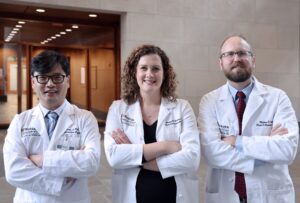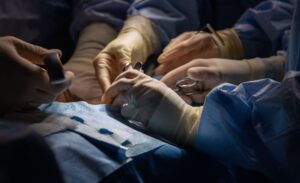Rhinoplasty
Rhinoplasty, often referred to as a nose job, can improve the shape of the nose as well as address any existing breathing difficulties. We offer experienced and board-certified specialists who use a variety of rhinoplasty techniques to achieve results that are natural-looking with minimal to no visible scarring.
Liquid Rhinoplasty
Also called non-surgical rhinoplasty, this procedure—done in the office rather than in an operating room—can make small changes to the appearance of the nose. Liquid rhinoplasty can, for example, be used to alter a dorsal bump on the nose or make slight changes to symmetry. During the procedure, liquid filler is injected into an area of the nose to change its shape. The changes made to the nose with this procedure are temporary, often lasting about a year.
Closed Rhinoplasty
Closed rhinoplasty is a surgical procedure performed in an operating room. It’s used to make a variety of changes to the nose, and its benefits include no visible scarring. Scars created during the procedure occur inside the nostril and so aren’t externally visible. The results of this procedure should last for many years.
Open Rhinoplasty
Some alterations to the nose require an open rhinoplasty, especially if the tip of the nose is involved. In this procedure, an aesthetic surgeon will ensure that the remaining scar is hidden at the bottom of the nose. Once healing is complete, the scar will be subtle. Like closed rhinoplasty, this procedure is performed in an operating room and its results should last for years.
Revision Rhinoplasty
Our specialists are here to help people who have had previous rhinoplasty procedures and may not be as satisfied with the results as they’d like. Your specialist will discuss your current goals and help determine the best course of action for you.
Individualized Treatment
Your aesthetic surgeon will want to discuss your concerns and learn about any health problems you may have. Before your appointment, take time to consider your goals. Your specialist will work with you to determine a treatment plan that fits your specific needs.
Recovery After Rhinoplasty
Liquid Rhinoplasty is an in-office procedure and you can return to your regular activities the same day. Typically, we advise no exercise for 1 to 2 days after. There may be some bruising which can take 1 week to improve. The swelling from the procedure itself usually can take 1 to 2 weeks to fully resolve.
After a closed or open rhinoplasty, the resulting pain and swelling will begin to ease after a week or two. Once swelling has reduced, any splints that were placed inside the nose can be removed. We’ll ask you to refrain from heavy lifting and any work-out routine for 4 to 6 weeks after surgery. After three months, you’ll see a further decrease in swelling, which will continue to improve in the year following surgery.
Why Choose Us?
Your nose is one of the most visible aspects of your face. When you choose to make changes to it, it’s important that you select a board-certified surgeon with the training, skills and experience required to achieve your goals. When you work with one of our surgeons, you’ll achieve virtually flawless results through a treatment plan designed specifically for you.
Frequently Asked Questions About Rhinoplasty
Though your specialist will be happy to answer any questions you might have about rhinoplasty, the following answers to some of the questions we hear most often from patients might help you prepare for your consultation.
Why do some people have a closed versus an open rhinoplasty?
The answer depends on personal goals. Some changes to the nose are best achieved with open rhinoplasty, others with closed rhinoplasty. You and your surgeon will discuss your desired results and determine the best treatment plan to meet them.
Who is a candidate for a liquid rhinoplasty?
Only a few people with very specific goals can achieve them with liquid rhinoplasty. For example, this procedure can be used to address a dorsal hump in the nose or to make minor adjustments to the tip of the nose.
Is it possible to combine rhinoplasty with a procedure to improve breathing problems?
Yes, our specialists often combine these two procedures. Your surgeon will examine you to evaluate any breathing problems you may have and create a treatment plan to address them as needed during your rhinoplasty procedure.
What is the recovery after surgery like?
Pain and swelling cause the most discomfort in the first week or two after surgery. Breathing becomes easier after any internal splints placed in the nose have been removed. Swelling will decrease significantly in the 3-month period following surgery and will continue to moderate for up to 1 year post surgery.


